Archaeoattacus edwardsii
ar-kee-oh-AT-tuh-kus mm
ed-WARD-zee-eye
(White, 1859)
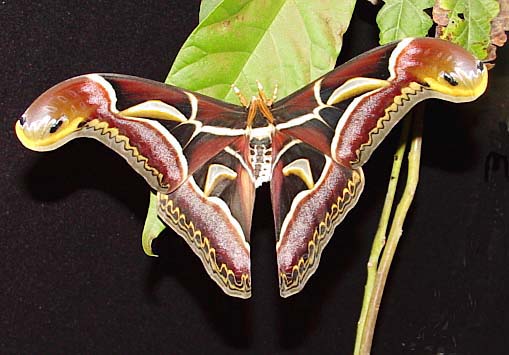
Archaeoattacus edwardsii courtesy of Scott Smith
TAXONOMY:Superfamily: Bombycoidea, Latreille, 1802 |
"Asian Spring Blossoms" |
DISTRIBUTION:
Archaeoattacus edwardsii flies in India, Nepal, Vietnam, Malaysia
and surrounding countries.
FLIGHT TIMES AND PREFERRED FOOD PLANTS:
Ailanthus and Kashi holly are
favorite natural hosts as are Machilus (Magnoliaceae) and Prunus (Rosaceae) .
ECLOSION, SCENTING AND MATING:
ECLOSION, SCENTING AND MATING:
Females extend a scent gland from the posterior tip of the abdomen to call in night-flying males whose undersides are as colourful and striking as the dorsal patterns.Photo courtesy of Scott Smith. |
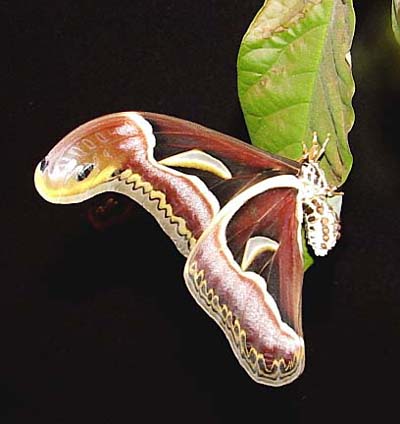 |
EGGS, LARVAE, COCOONS AND PUPAE:
Eggs are relatively large, round, slightly flattened dorsally and are covered with a reddish brown glue.Egg image courtesy of Julian L Addy. |
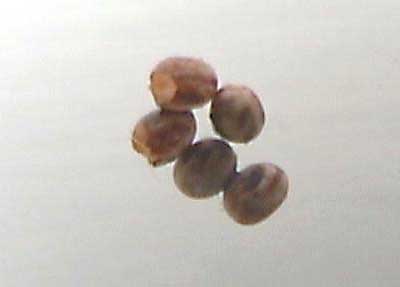 |
Eggs are deposited singly and the larvae are solitary feeders.The first instar larvae are striped as are most of the Attacus and Samia species. First instar larvae courtesy of Julian L Addy. | 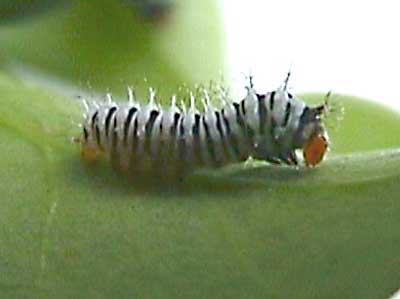 |
In the second instar there is a heavy buildup of waxy powder of scoli and body. | 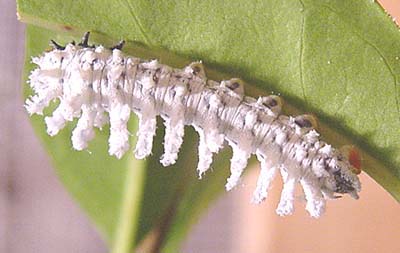 |
Larvae like warmth and humidity and prefer ailanthus, but privet is serving quite well for this larva.In a short while, the secretion of waxy powder will offer this newly moulted larva some protection as it moves through the foliage. |
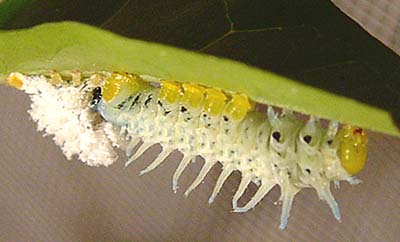 |
Larvae progress rapidly in warm humid conditions and do not like cooler, dryer conditions often encountered in captive rearing situations.First three larval images are courtesy of Zlatko Liber. The pinkish red patch on the "anal claspers" becomes quite distinct as the larvae progress. |
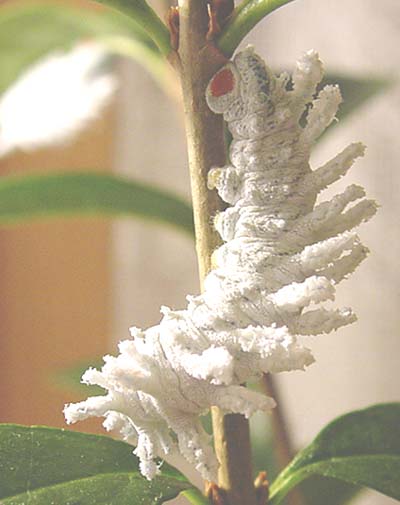 |
A fine white powder covers larvae after each moult but quite a bit rubs off as they crawl through foliage.This fifth instar larva is getting ready to spin a cocoon that will be double-walled, as per the Attacus species, but edwardsii larvae tend to incoroporate twigs and leaf stems into the spinning. Photo courtesy of Mike Matheson. |
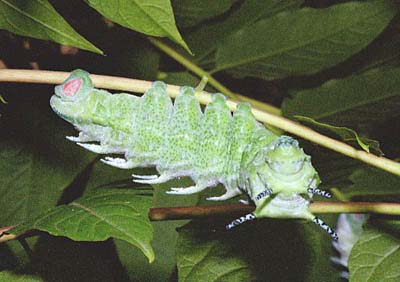 |
Larval Food Plants
Listed below are primary food plant(s) and alternate food plants listed in Stephen E.
Stone's Foodplants of World Saturniidae. It is hoped that this
alphabetical listing followed by the common name of the foodplant will
prove useful. The list is not exhaustive. Experimenting with closely
related foodplants is worthwhile.
Ailanthus altissima......
Ilex chinensis
Ligustrum
Populus
Prunus
Salix
Syringa vulgaris
Aianthus
Kashi holly
Privet
Poplar
Cherry
Willow
Lilac
Ailanthus altissima...... |
Aianthus |
Return to SAMPLES Index
Return to Introduction with members' comments